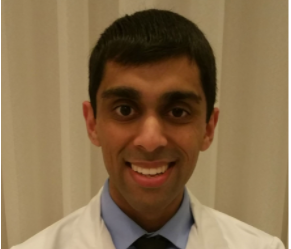IDRE
Institute for Digital Research and Education

- This event has passed.
Building a patient motion model for Radiotherapy
November 19, 2021 @ 11:30 am - 12:30 pm
Event Navigation
Speaker: Ricky Savjani, Ph.D.
IDRE Scholar,
Department of Radiation Oncology,
University of California Los Angeles
Abstract: Several technological advances in radiotherapy have enabled the use of focused radiation to treat solid tumors within the thoracic cavity. Stereotactic Body Radiation Therapy (SBRT) offers a way to treat patients with high doses of radiation with just a few (three to five) treatments entirely non-invasively, providing excellent tumor control for both early stage non-small cell lung cancer and metastatic disease. However, respiratory motion causes the tumor and surrounding organs at risk to move. This movement is particularly concerning for thoracic SBRT, as radiation pneumonitis stems largely from an inability to visualize the tumor and lungs during treatment and thus requires larger margins. Respiratory motion has been characterized as irregular (can differ from breath to breath and minute to minute) and can induce motion of 5 cm or more, particularly at the diaphragm. Overall, there is a pressing need to measure and monitor thoracic motion while cancer patients are being treated with radiotherapy.
Our group at UCLA has previously created a 5DCT model to better represent a patient’s tumor motion. Patients are allowed to breathe freely while they undergo 25 fast, low-dose helical CT scans during simulation prior to radiation therapy. An over-determined linear model is fit to find the position of any voxel based on the initial position and the current tidal volume and airflow. The corresponding imaged motion of the tumor and thoracic cavity can more accurately be measured with 5DCT compared to traditional 4DCT models.
We now have a large cohort of data (n = 91 patients) to begin fitting an inter-patient motion model. Working with Varian, A Siemens Healthineers Company, we have applied auto segmentation models to each of the 25 scans for each patient. We have trained a Conditional Variational Autoencoder (cVAE) model to generate deformations between any two pairs CT volumes. The embedded space can be visualized in 3D, and we are now working on ways to drive the amount of inhalation/exhalation using an external surrogate (a belt the patient wears while being treated). In this way, we envision generating 3D volumetric representations at the treatment console while patients are being treated with radiotherapy in real-time.
About the speaker: Ricky Savjani is a resident physician in the Department of Radiation Oncology at UCLA. As part of his training, he is conducting research through the American Board of Radiology Holman Research Pathway, in addition to seeing patients clinically to become a radiation oncologist. Prior to joining UCLA, Ricky received BS degrees in Electrical Engineering/Computer Science and Brain and Cognitive Sciences at MIT. He then pursued an MD/Ph.D. at Texas A&M College of Medicine, where his research focused on structural and functional imaging of the human brain. Ricky loves medical imaging and hopes to continue to use advanced imaging approaches to deliver safer and better radiation to patients.
Location: Zoom (RSVP here for the link)




